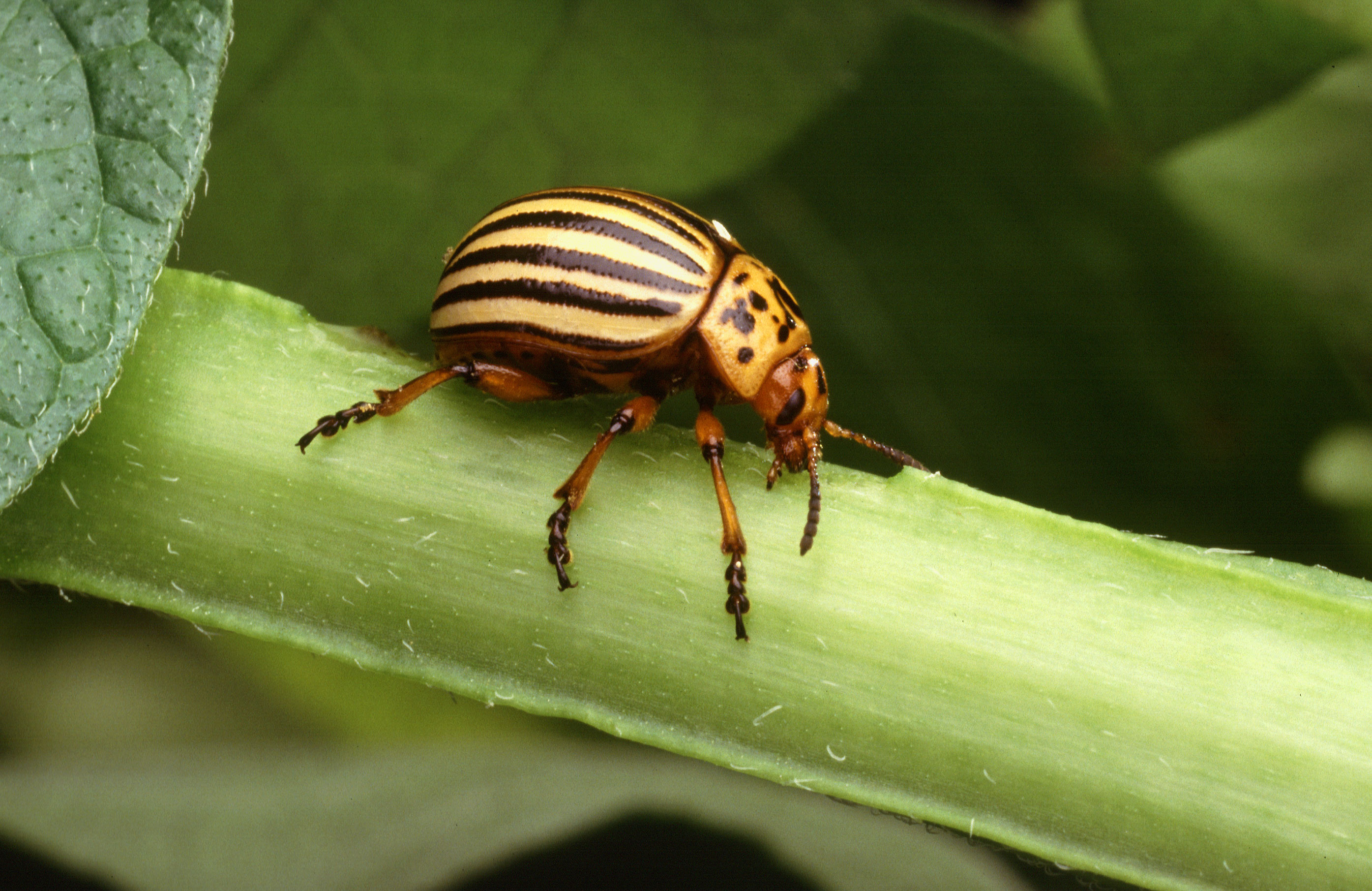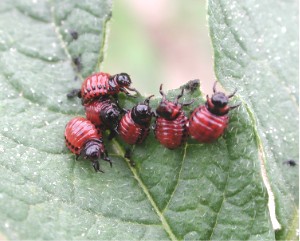 .
.From Wikepedia:
The Colorado potato beetle (Leptinotarsa decemlineata, also known as the Colorado beetle, ten-striped spearman, the ten-lined potato beetle) is an important pest of potato crops. It is approximately 10 mm (0.4 inches) long, with a bright yellow/orange body and 5 bold brown stripes along the length of each of its elytra, and it can easily be confused with its close cousin and look-alike, the false potato beetle.
CPB females are very prolific; they can lay as many as 800 eggs. The eggs are yellow to orange, and are about 1.5 mm long. They are usually deposited in batches of about 30 on the underside of host leaves. Development of all life stages depends on temperature. After 4-15 days, the eggs hatch into reddish-brown larvae with humped backs and two rows of dark brown spots on either side. They feed on the leaves. Larvae progress through four distinct growth stages (instars). First instars are about 1.5 mm long; the fourth is about 8 mm long. The larvae in the accompanying picture are third instars. The first through third instars each last about 2-3 days; the fourth, 4-7 days. Upon reaching full size, each fourth instar spends an additional several days as a non-feeding prepupa, which can be recognized by its inactivity and lighter coloration. The prepupae drop to the soil and burrow to a depth of several inches, then pupate.
 Depending on temperature, light-regime and host quality, the adults may emerge in a few weeks to continue the life cycle, or enter diapause and delay emergence until spring. They then return to their host plant to mate and feed. In some locations, 3 or more generations may occur each growing season.
Depending on temperature, light-regime and host quality, the adults may emerge in a few weeks to continue the life cycle, or enter diapause and delay emergence until spring. They then return to their host plant to mate and feed. In some locations, 3 or more generations may occur each growing season.*Picture to the right is the larvae in their third instars
The Colorado beetle has developed resistance to all major insecticide classes.
All about the Colorado Potato Beetle from Wikipedia
a more detailed article
A Natural Solution! - Flax is a Repellent Plant that May Protect Potatos from Colorado Potato Beetle Infestations
From: Home Remedies, Holistic Approach, Repellent Plants
See How to grow flax
Next year we will for sure be growing flax next to our potatoes but for this year we are resorting to picking the beetles the old fashioned way - by hand. Any other ideas would be appreciated. We have tried diatomaceous earth but we have not found an efficient way of applying it.
1 comment:
Hi! Alicia was here visiting and spoke of your family often.
I too am seeing a dying potato crop, but I see no beetles. Very sad.
One day, on or way to TX where my in-laws live, we'll come visit you and Clear Creek!
Post a Comment